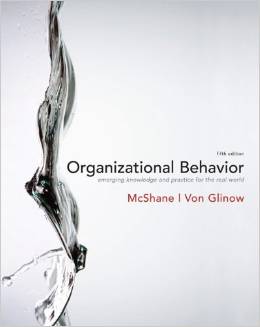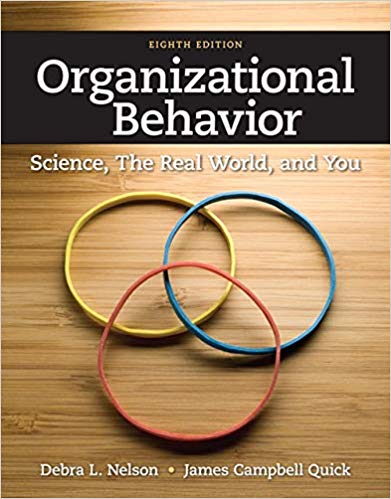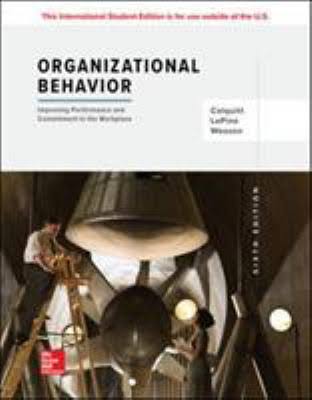Organizational Behavior Emerging Knowledge 5th Edition by Steven McShane – Test Bank
Chapter 04
Workplace Emotions, Attitudes and Stress
True / False Questions
1. Emotions represent the cluster of beliefs, assessed feelings, and behavioral intentions towards something or someone.
True False
2. Emotions are brief events or “episodes”.
True False
3. Moods represent our reaction to specific people or events, whereas emotions are not directed toward anything in particular.
True False
4. People are consciously aware of most emotions they experience.
True False
5. Emotions generate a core affect that something is good or bad, helpful or harmful, to be approached or avoided.
True False
6. Strong emotions trigger our conscious awareness of a threat or opportunity in the external environment.
True False
7. Moods are less intense emotional states that are not directed toward anything in particular.
True False
8. Emotions are communications to ourselves, which serve to put us in a state of readiness.
True False
9. Attitudes are fleeting physiological experiences we have in response to an attitude object.
True False
10. Attitudes develop from our emotional experiences as well as from the perceptual process.
True False
11. Attitudes consist of the following three components: emotions, beliefs, and behaviors.
Ans:
True False
12. Beliefs represent our perceptions about the attitude object.
True False
13. Attitudes represent a cluster of beliefs, motivation and feelings about an attitude object.
True False
14. In the model of emotions, attitudes, and behavior, feelings lead to beliefs, which in turn lead to behaviors.
True False
15. People with the same feelings may form different behavioral intentions based on their unique past experience.
True False
16. Research concludes that when our emotions and logical analysis of a situation conflict with each other, we should follow our emotions.
True False
17. Cognitive dissonance is more likely to occur when the dissonant behavior is known to everyone, was done voluntarily and can’t be undone.
True False
18. A person’s emotions are influenced by his or her personality, not just from workplace experiences.
True False
19. Emotional labor refers to any physical work that makes employees feel angry that they must perform this kind of work.
True False
20. Display rules are norms that require employees to show certain emotions and to withhold others.
True False
21. Emotional dissonance occurs when we use our emotional intelligence on others but other people do not use their emotional intelligence on us.
True False
22. Emotional dissonance refers to the conflict experienced between the emotions we are required to display and our true emotions in that situation.
True False
23. Conflict between required and true emotions is called emotional intelligence.
True False
24. Emotional dissonance is most common where emotional display rules are highly regulated and employees must display emotions quite different from their true emotions.
True False
25. Jobs require more emotional labor when employees must display a variety of emotions, rather than just one or two.
True False
26. The norms and expectations governing emotional display rules are similar around the world.
True False
27. Emotional labor may result in stress and job burnout when the prescribed emotions for a job conflict with the employee’s true emotions.
True False
28. Employees experience less stress from emotional labor when they practice surface acting rather than deep acting.
True False
29. Employees minimize the stress from emotional labor by actually changing their emotions to match the job requirements (deep acting), rather than displaying emotions contrary to their true emotions (surface acting).
True False













Reviews
There are no reviews yet.